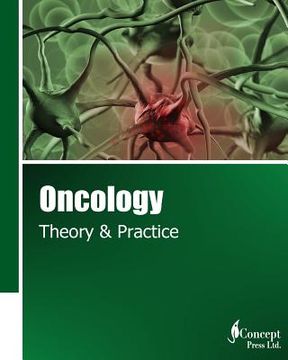Compartir
Oncology: Theory & Practice (en Inglés)
Iconcept Press
(Autor)
·
Iconcept Press
· Tapa Blanda
Oncology: Theory & Practice (en Inglés) - Press, Iconcept
$ 76.520
$ 139.120
Ahorras: $ 62.600
Elige la lista en la que quieres agregar tu producto o crea una nueva lista
✓ Producto agregado correctamente a la lista de deseos.
Ir a Mis Listas
Origen: Estados Unidos
(Costos de importación incluídos en el precio)
Se enviará desde nuestra bodega entre el
Viernes 19 de Julio y el
Miércoles 31 de Julio.
Lo recibirás en cualquier lugar de Chile entre 1 y 3 días hábiles luego del envío.
Reseña del libro "Oncology: Theory & Practice (en Inglés)"
Oncology is a branch of medicine that deals with cancer. "Onco" means bulk, mass, or tumor while "-logy" means study. Each of the cells of the body have a tightly regulated system that controls their growth, maturity, reproduction and eventual death. Cancer begins when cells in a part of the body start to grow out of control. There are many kinds of cancer, but they all start because of out-of-control growth of abnormal cells. This book focus on the recent progress and research on oncology and serves as an essential guide for oncologists. Oncologists are medical professionals who practice oncology. These oncologists have several specific roles. They help in diagnosis of the cancer, help in staging the cancer and grading the aggressive nature of the cancer. There are totally 10 chapters in this book. Chapter 1 shows that chronic IGF-1 stimulation can bypass chemoresistance and support Ewing sarcoma cell apoptosis in combination with the death ligand Apo2L/TRAIL. The findings may have important implications for the biology as well as the clinical management of the Ewing sarcoma family of tumor. Chapter 2 tests total cfDNA concentration, cfDNA integrity, BRAFV600E mutation and RASSF1A promoter methylation associated to cfDNA in melanoma patients and healthy controls in order to identify a sequential multi-marker panel in cfDNA able to increase the predictive capability in the diagnosis of cutaneous melanoma. Chapter 3 overviews transforming growth factor-B (TGF-B)-mediated tumour suppressive pathways and outlines the molecular mechanisms of these effects. Chapter 4 reviews the contribution of urokinase-type plasminogen activator system in breast cancer; the most common cancer in women worldwide. Better understanding of the molecular biology of this malignancy leads to efficient prognosis and therapies for the disease. Chapter 5 describes how non coding RNA families can influence the development of neuroblastoma and also possibly give further insights to new diagnostic procedures and therapies for this devastating paediatric cancer. Chapter 6 reviews the current knowledge of Thymidine Kinase 1 a clinically relevant cancer biomarker which is significantly elevated in serum and tissue of cancer patients. Measurement of Thymidine Kinase 1 is useful as an aid in diagnosis and prognosis of many different cancer types and has recently been shown to have vast clinical potential especially as a screening and monitoring tool for cancer patients. Chapter 7 discusses the characteristic pathological, immunophenotypic, and genetic features of different GI lymphomas categorized according to World Health Organization (WHO) classification. Chapter 8 provides an overview of the chemokine system in homeostasis and cancer, with a focus on the CX3CL1/CX3CR1 axis to illustrate the complex interplay between the chemokines and other molecules that shape tumor's microenvironment and its progression. Chapter 9 reviews the recent advances in cohesin and its associate proteins and discusses the relation between their deregulation and tumorigenesis. Cohesin plays a critical role in regulating sister chromatid cohesion and separation, DNA damage signaling and repair, gene expression, as well as centrosome biogenesis, etc. Chapter 10 reviews the current diagnostic issues that are focused on the identification of the thyroid biomarkers. It shows that thyroid biomarkers has a potential to improve the diagnostic accuracy.
- 0% (0)
- 0% (0)
- 0% (0)
- 0% (0)
- 0% (0)
Todos los libros de nuestro catálogo son Originales.
El libro está escrito en Inglés.
La encuadernación de esta edición es Tapa Blanda.
✓ Producto agregado correctamente al carro, Ir a Pagar.

